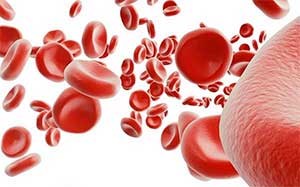Daily-current-affairs
/
14 Oct 2020
‘Saviour Sibling’ Experiment : Daily Current Affairs

‘Saviour Sibling’ Experiment
Why in NEWS ?
- India’s first ‘saviour sibling’ experiment is a success according to involved doctors.
About Saviour Sibling
- Under ‘saviour sibling’ experiment, baby’s bone marrow was used to save child.
- One-year-old sibling has saved her brother’s life by donating her bone marrow.
- Girl named Kavya was conceived by her parents through invitro fertilisation (IVF) to
save her brother, Abhijeet Solanki, who was born with Thalassemia.
- Sperm and eggs are used to create embryos. Once it grows for five days, it is sent for
testing to check if the embryo has Thalassemia Major, has matching HLA (Human
Leukocyte Antigen) and genetic testing is done to rule out any other complications.
- In all, 18 embryos were biopsied of which only one embryo was found to have
matching HLA, normal on preimplantation genetic testing for monogenic diseases
(PGT M), and was thus transferred successfully in its very first cycle.
What is Thalassemia ?
- Thalassemia is an inherited blood disorder where the haemoglobin count is low in
blood and such persons require frequent blood transfusions (Mild thalassemia
requires no treatment, but acute thalassemia might require regular blood
transfusions).
- Haemoglobin is a protein molecule that carries oxygen in the red blood cells.
- This disorder results in the extreme destruction of red blood cells that leads to
anaemia.
- Anaemia is a condition in which the haemoglobin or red blood cells are less than the
normal count
What is In Vitro Fertilisation(IVF) ?
- IVF is a type of assisted reproductive technology used for infertility treatment and
gestational surrogacy.
- A fertilised egg may be implanted into a surrogate’s uterus, and the resulting child is
genetically unrelated to the surrogate.
- Some countries have banned or otherwise regulate the availability of IVF treatment,
giving rise to fertility tourism.
- Restrictions on the availability of IVF include costs and age, in order for a woman to
carry a healthy pregnancy to term.
- IVF is generally not used until less invasive or expensive options have failed or been
determined unlikely to work.
IVF process
- In vitro fertilisation (IVF) is a process of fertilization where an egg is combined with
sperm outside the body, in vitro (“in glass”).
- The process involves monitoring and stimulating a female ovulatory process,
removing an ovum or ova (egg or eggs) from the female ovaries and letting sperm
fertilise them in a liquid in a laboratory.
- After the fertilised egg (zygote) undergoes embryo culture for 2–6 days, it is
implanted in the same or another female uterus, with the intention of establishing a
successful pregnancy.







